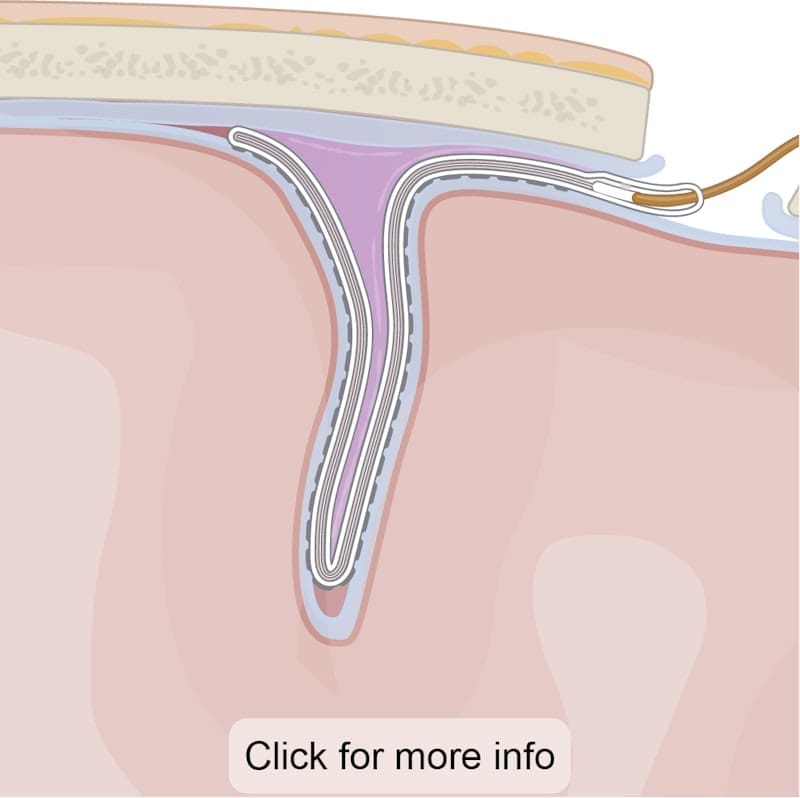Synapsuit
Translating arm and hand movement intentions into action
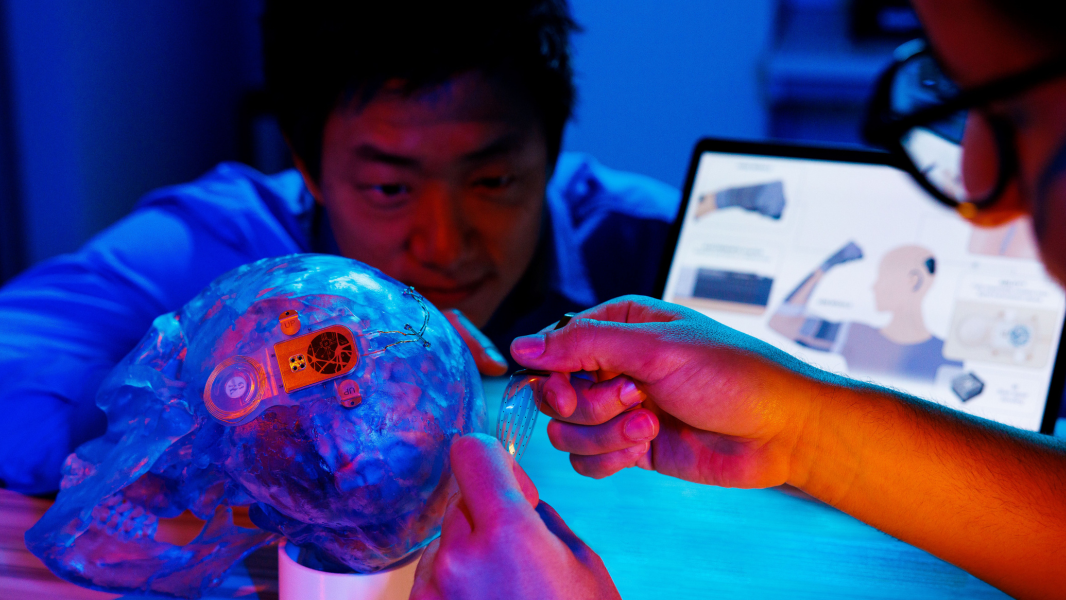
Goal | Restoring mobility with AI exosuit
Status | Ongoing
Timeframe | 2024 – 2026
Area of Research | Neurotechnology development; AI Guided neuromodulation
Partners | KETI, Neurosoft Bioelectronics, Jang Eun FnC, EPFL, CHUV, Innosuisse, KIAT
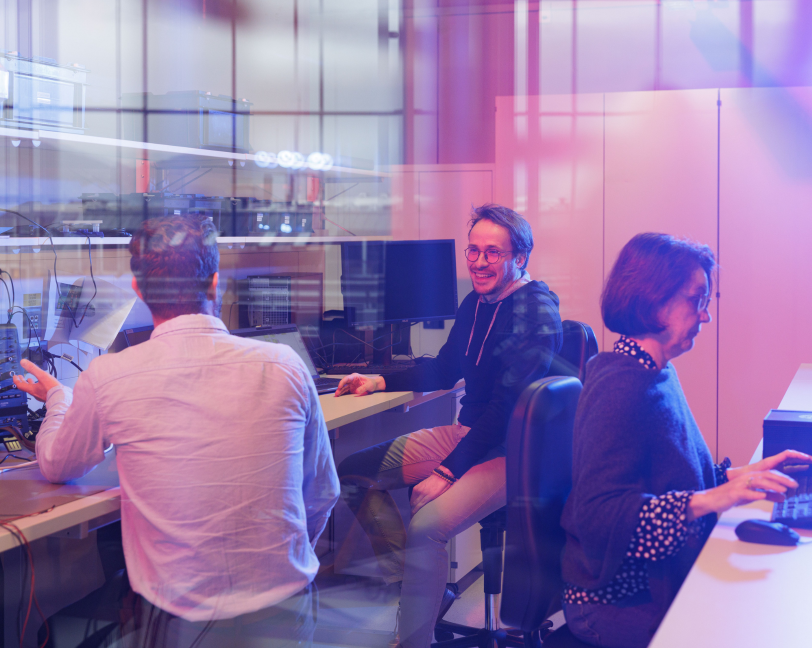
Synapsuit is a collaborative project designed to develop high-performance AI-algorithms to decode complex brain signals to control a lightweight soft wearable exosuit to support arms and hands movements in real time. Working closely with local and international partners, the Wyss Center team is working to restore mobility by developing technology to move people’s hand and arms as they intend, and accelerate neuro-rehabilitation.
Restoring communication pathways after spinal cord injury or stroke
Spinal cord injury (SCI) and stroke are common causes of severe paralysis that diminish people’s quality of life and reduce their independence. It is estimated that there are over 20 million individuals worldwide living with spinal cord injuries (SCI), and close to a million new cases are reported annually. Globally, there are over 101 million people who have experienced a stroke. In the United States alone, an estimated 302,000 people live with traumatic spinal cord injury, with 60% of them having tetraplegia. Furthermore, approximately 800,000 people have a stroke every year in the United States, 80% of which result in permanent motor disabilities.
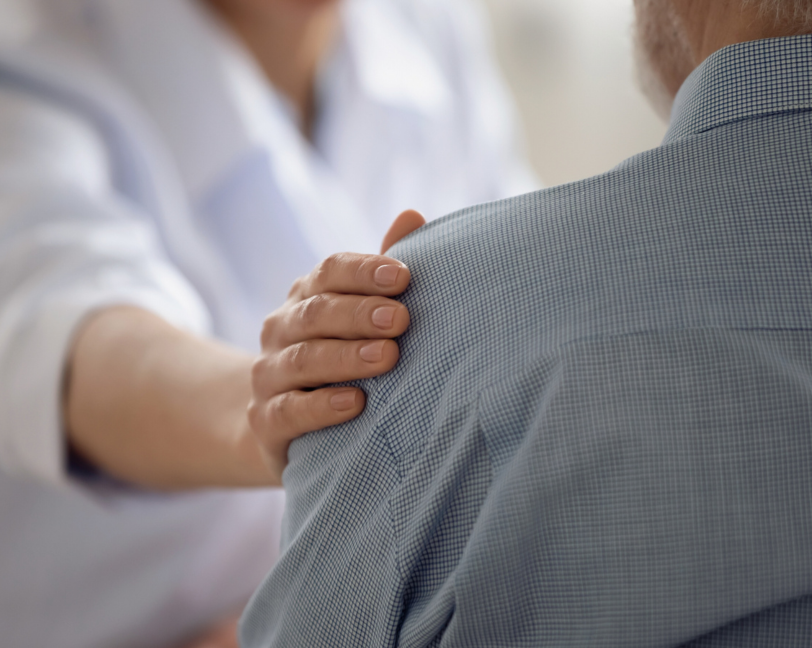
High-performance decoding algorithms to restore arm and hand movement
Spinal cord injury, stroke, and a range of neurological disorders, interrupt the flow of information between the brain and the spinal cord that is responsible for generating upper and lower limb movements. The result is permanent paralysis of the upper and/or lower limbs. Restoring functions like grasping is critical, particularly for people living with SCI, the majority of whom rank arm and hand function as a top priority.
The Wyss Center partners with local and international teams to explore new standards of Neuro-AI technologies to assist people living with severe upper-limb motor disabilities to produce arm and hand movements. The team is working to restore mobility by developing technology to move people’s hand and arms as they intend. To achieve this goal, the team gathers large amount of clinical data using flexible, high-density ECoG electrodes and develops new AI-algorithms that can decode movement intentions of people experiencing motor disability.
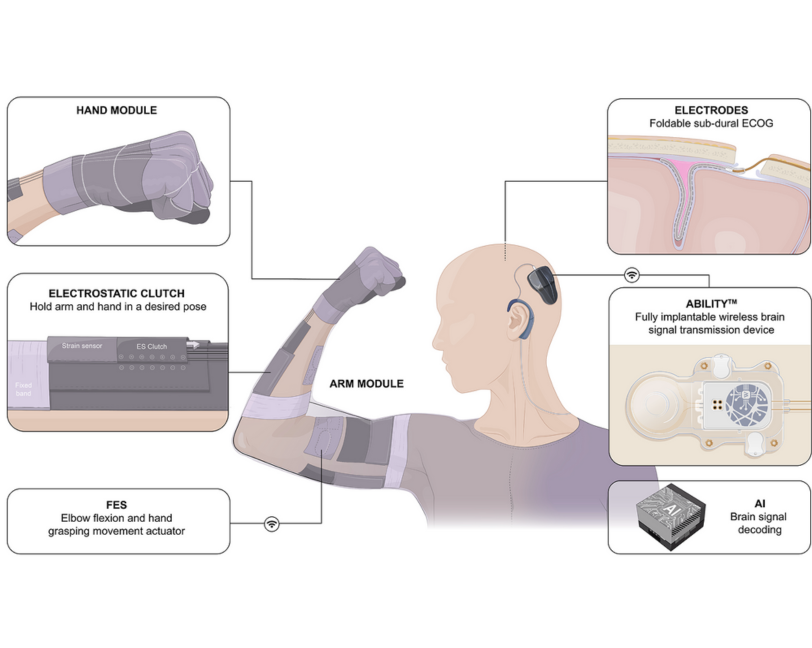
The Synapsuit approach
The Neuro-AI algorithms, combined with a brain-controlled exosuit, provide means to accelerate neuro rehabilitation methods through the support of movement of people living with stroke and SCI. The Wyss Center is developing novel AI algorithms to gain deeper understanding of neural mechanisms that will set a new standard for upper-limb movement decoding methods.
Brain signals are recorded using soft, foldable and flexible electrodes that conform to any neural tissues. The brain signals are then fed into the Neuro-AI decoder that sends a command to control a fully flexible soft exosuit. The exosuit sends electrical current through transcutaneous neurostimulation to control the muscle that directly moves the arm and the hand. Combined with a special material called electrostatic clutch (ES-clutch), the soft exosuit allows the arm and hand to hold posture on demand without causing fatigue.
Electrocorticography (ECoG) electrodes provide fine spatial and temporal fidelity without penetrating the brain surface. They detect brain signals and transmit neural data to the AI decoder in real time. Unlike conventional electrodes, the new type of ECoG electrodes developed by Neurosoft Bioelectronics are thinner than 1mm, thanks to platinum nanoparticle printing technology. They can be easily folded and they conform safely to the complex surface of the brain, which may reduce surgical complications. Furthermore, they can be placed on sulcus areas that are inaccessible with traditional ECoG electrodes, that contain valuable motor information and improve decoding accuracy.
Neuroscience and AI are converging rapidly, creating essential tools for decoding and understanding the underlying patterns of brain signals. Novel AI algorithms are needed to overcome the ever-changing signals of a brain, called concept drift. The project team is working to design a model that can adapt to the change of the latent feature representation. In addition, algorithms will be designed to disentangle “efferent motor signals”, i.e. signals coming out form the brain to move our muscles – from “afferent sensory signals”, i.e. sensory feedback signals coming into the brain – for an improved decoding stabilization. It is a pre-requisite to achieve a practical closed-loop system. In parallel, the project team will use mutual learning, where the user tries to improve the performance of the decoder by interacting with it and by learning how it responds in real time.
The most recent development in wearable robotics is the shift from rigid exoskeletons to soft, lightweight and body-conforming exosuits. Indeed, rigid exoskeletons pose challenges in achieving proper alignment with the wearer’s biological joints, and soft exosuits overcome these limitations by using textiles to minimize the suit’s unintentional interference with the body’s natural biomechanics. The exosuit developed by KETI in this project is soft, light, and adaptable to any hand and arm shape. Its design prioritizes both comfort and practicality, based on biomechanically driven fabric with fully integrated electronics to improve the user’s quality of life.
The exosuit is made of a flexible, body-conforming actuator that combines functional electrical stimulation and electrostatic clutch, capable of actuating and sustaining arm and hand postures even after the stimulation is finished. The clutch is made of a special material that works like a flexible condenser to lock arm or finger joints in any position while consuming 100x less of the power required by conventional motors.
The Synapsuit project is part of a consortium that includes leaders in movement restoration for spinal cord injury and stroke that lead critical scientific and clinical aspects of the project. Partners of the consortium include the Korea Electronics Technology Institute (KETI), Neurosoft Bioelectronics, and Jang Eun FnC, Professors Grégoire Courtine & Jocelyne Bloch of the Swiss Federal Institute of Technology in Lausanne (EPFL) and Lausanne University Hospital (CHUV). This initiative is a collaborative project supported by Innosuisse and KIAT grants.

The Lighthouse Partnership
The project benefits from the resources and leadership of the Lighthouse Partnership, an inter-institutional collaboration bringing together scientists, engineers, and clinicians with the goal of accelerating AI-guided neuromodulation. By harnessing the interdisciplinary expertise present in the Lemanic Region, the Lighthouse Partnership addresses the increasing global challenge of neurological and mental health disorders with leading institutions.
